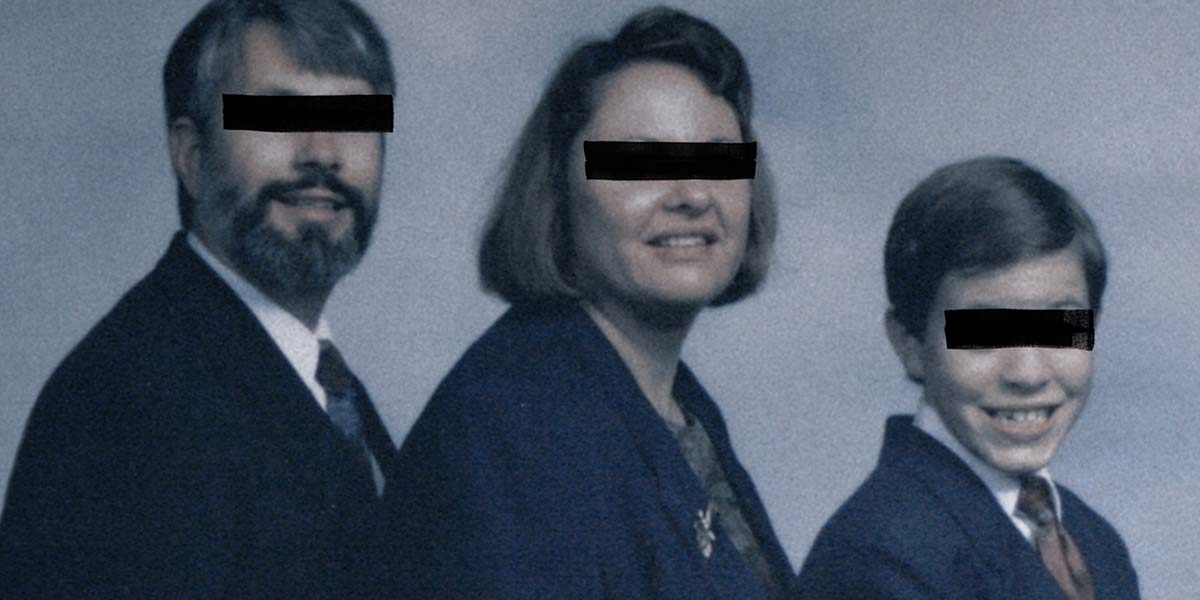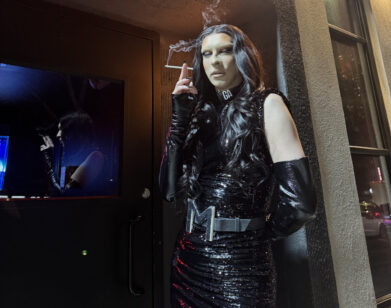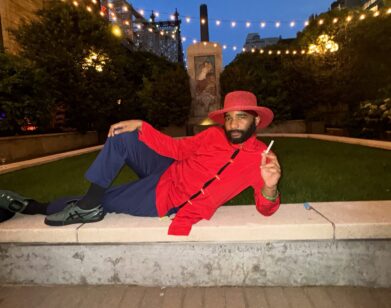tiff
Dispatch from TIFF: Bruce LaBruce, Errol Morris, and a Wallop of Star Power

In cooperation with the state of the world, the Toronto International Film Festival has gone virtual this year. While I do miss sitting in dark movie theaters for 13 hours a day, waiting in press lines, eavesdropping on conversations between critics, surveying their bad fashion choices, partying with Lady Gaga, ordering overpriced room service, and hammering out reviews at one in the morning, I’m indulging in the freedom to multitask. No one should be forced to give a mediocre film one hundred percent of their attention, anyway. In Toronto, I might fall asleep in the middle of a screening, like I did while watching First Man. In my new living room in West Hollywood, I’m assembling a workout bike, ordering takeout, gossiping, writing slogans for ad campaigns, and even participating in Zoom meetings. COVID-19 has decimated whatever was left of our attention spans.
I’m also excited to cover this year’s film slate for Interview, because Interview started as a film journal in 1969. A few years in, I read somewhere, Andy Warhol forced Bob Colacello to stop reviewing movies because bad reviews were upsetting potential cover stars. Without Andy around, I have free rein. Speaking of Andy, Bruce LaBruce’s new movie, Saint-Narcisse, opens on a man’s bulge in a pair of black denim jeans—a callback to Warhol’s Sticky Fingers album cover for The Rolling Stones. The director’s latest lark is screening as part of the new “TIFF Industry Selects” category, designated as separate from the official selection, and it stars Félix-Antoine Duval as Dominic, an autoerotic obsessive who dreams of watching himself have sex. When his grandmother dies, he discovers his mother, presumed deceased, is still alive and living as a lesbian witch in the forest with an aggressive young paramore (Alexandra Petrachuk). Far-fetched familial melodrama ensues before Dominic begins receiving Giallo-inspired visions of himself as a hooded monastic in some sort of eerie religious brotherhood. A chance encounter leads Dominic to discover he has a double—a twin brother, Daniel (also played by Duval)—who’s being sexually abused within a gay religious sect obsessed with the martyr Saint Sebastian. LaBruce has long fetishized cult groups and sadomasochism in his work, as much as classic Hollywood leading men, whom he sanctifies as homoerotic pinup fodder. Duval fits into this milieu, with his muscular physicality and the fine features of a classic film star, if not the acting chops (the delivery across the board is reminiscent of line reads in a porno flick).
The women in Saint-Narcisse are depicted as either witches or sexual predators to a comedic degree, and there are scenes that knowingly embrace camp, such as when twin brother Daniel flogs himself while jerking off to a 1970s International Male catalogue. (When a friar attempts forcible sexual assault, he hisses “there is grace in suffering,” perhaps the funniest line of the year.) There’s an innocence to LaBruce’s filmmaking which can be both superficial and absurdly satisfying. LaBruce worships cinema and understands what makes a great shot or a transition, and this academic approach is commendable even if it doesn’t always work. His enthusiasm for the form, as much as his discardment of social taboos, is infectious, low-stakes, and in the transgressive sense of the word, fresh. This is a director who’s kept himself on the fringes of the industry with deliberation, occasionally by lending his talents to hardcore adult films, but he possesses ineffible skill and a refined countercultural taste level that is overdue for an appraisal in an industry that pays lip service to progressivism without giving credit to those who’ve really walked the walk.
A less flattering contribution to the queer film canon is Enemies of the State, a gripping documentary thriller directed by Sonia Kennebeck and executive produced by Errol Morris. It chronicles the 2010 arrest and imprisonment of then-25-year-old Matt DeHart, a former Air National Guard serviceman-turned hacktivist and founding member of Anonymous. The Morris stamp feels present in the film’s slick reenactment sequences, in which actors playing the real-life subjects lip-synch to audio tapes of actual phone calls and interrogations, a gambit that feels dislocating at first but pays off convincingly. The story itself is presented as a knotted yarn that briskly unspools with the participation of law enforcement, attorneys, and Canadian border officials, who boil down the circumstances to a simplistic and flawed either/or proposition: DeHart, through his Anonymous server, alleges to have discovered a shocking C.I.A. secret leading to an F.B.I. raid upon his home that turned up underage pornography, resulting in trafficking and grooming charges being brought against DeHart. DeHart and his parents allege the photos and victims were planted by the F.B.I. in order to justify the arrest. How, after all, do those allegations explain the F.B.I.’s torture tactics, verified by hospital records, of their injecting DeHart with Thorazine and amphetamines while he was in captivity?( It “creates a beautiful truth serum from what I understand,” DeHart’s mother explains.) The intel DeHart came upon—corroborated by media associates—if true, is abhorrent: that the CIA engineered the 2001 Anthrax attacks against American citizens (5 killed, 17 gravely injured) in the week following the September 11th attacks to drum up support for George W. Bush and the War in Iraq, a conspiracy that was covered up by the F.B.I. In a final twist, evidence appears that throws DeHart under greater suspicion, pivoting gracelessly to a note of moral relativism, as if two terrible things can’t be true at once. As well-executed and fascinating as it is, the film suffers from its final message, which seems to be that you never know what to believe, leaving us to make up our own minds. I did, for what it’s worth, and I think Americans deserve answers the filmmakers aren’t interested in pursuing.

Regina King makes her feature directorial debut with One Night in Miami, based on the play of the same name by Kemp Powers, who also wrote the film. It imagines a night in February 1964, after Cassius Clay defeated Sonny Liston and became the Heavyweight Champion of the World, in which Clay (Eli Goree) holes up in a hotel room with friends Jim Brown (Aldis Hodge), Sam Cooke (Leslie Odom Jr.), and Malcolm X (Kingsley Ben-Adir) to discuss each of their emerging roles within the Civil Rights movement. Preening, photo-taking, singing, congratulating, and arguing ensues in the confines of a handsome mid century suite, interrupted by flashbacks to a few past events. Not much happens in terms of plot, and King’s direction is fairly by-the-numbers: she adroitly captures rapidfire exchanges between her showboating actors, whose matinee-idol looks serve as a balm for performances that swing big and don’t always land. The conversations that make up the meat and potatoes of the film, dissecting and differentiating philosophies behind Black activism and advancement, certainly bear a renewed relevance, but feel more like an exercise in fan fiction than a discursive mandate. For something billed as an imagining, King might have pushed further into surrealism or stylization visually, making the fantasy component more central and saying something interesting about our idols and the way we mythologize them, or why and how they mythologized themselves. But King seems more concerned with messaging than aesthetics. Even the outdoor setups with milling extras feel airless, without the crackling breath of life or the electricity that you crave from a journey to 1960s Miami. But if this film accomplishes anything, it’s in creating a stark relief that enables Odom Jr. to make off with the entire show. As Cooke, Odom’s performance reveals itself rather quietly, displaying a naturalism and screen presence of utter spontaneity—he has an ease that belies his own gravity. When the floodlights hit him and you catch his eyeline just over the frame, he evokes that quality shared by the greatest screen actors (King included), a wallop of star power that feels as pivotal as any meeting between four important figures you could imagine.






